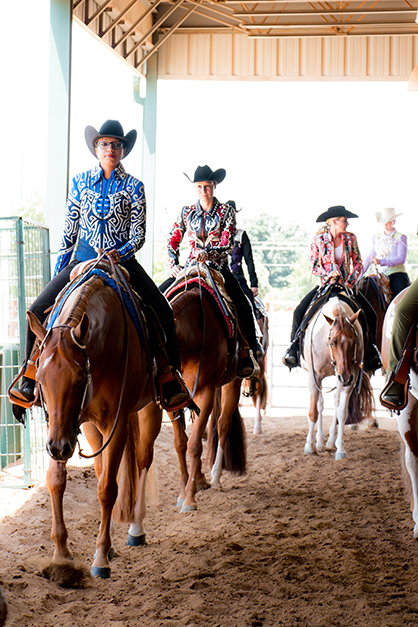Starting Slow is Key to Getting Your Senior Horse Back in Shape for Spring
Having the winter off can make any horse flabby and out-of-shape. However, for the senior horse, a long, hard winter can really set them back in regards to their muscle tone and endurance, according to Laurie Cerny, editor of www.equineseniors.com
“This has been one of those years that between long stretches of sub-zero weather and heavy snow storms many of us have had to stop working our horses,” Cerny said. “We don’t have an indoor arena and had to stop any exercise (other than daily turnout) in early December. We’ve had a few melts in January that gave us a couple of days with good footing so we could do some exercising, but that’s been about it.”
Cerny, who will start back in April showing an 18-year-old mare, figures it will take at least six weeks to get her senior horse back into competitive condition. “This has been the case for the past few winters – when pretty much from December to March we couldn’t do much with the horses because of the weather and bad footing.”
The big thing Cerny has learned with her senior horses is to start them back slow.
“I’ve learned that it’s best to do nothing too fast or too tight for at least two weeks,” she said. “Especially with a senior horse that likely has arthritis and some hock and knee issues, the last thing you want to do is work them hard and do a lot of tight turns like three-sixties.”
Once the weather breaks, Cerny will start by hand walking and trotting her mare several times a day. She’ll gradually add ground poles and cone work to the regimen to help with agility. Last, she’ll add backing and some turns in either direction.
“I’ll wait about ten days before I even think about longing my mare. I’ve had her have a meltdown or two when she’s feeling frisky in the spring, causing her to tear around for a couple minutes on the line. She ends up paying for it later by coming up a sore, which sets our conditioning regimen back a couple days.”
Cerny still prefers working her mare on a longe line over free working in a round pen. “With a halter and line on them – especially if you’re using a rope halter, you can get them stopped fairly quickly if they start to really buck or cut a rug. I know many professional horse trainers would disagree with me and would advise letting your horse continue until you got their mind back. But, I prefer to do what’s right for me and my horse at the time, and with a senior horse I would rather prevent an injury; it’s my better to be safe than sorry mindset.”
It can be several weeks of hand walking and mild longing (mostly at the walk and trot and only a couple minutes in each direction), before Cerny even thinks about riding.
“Last year, because I was still competing with my mare in Halter classes, and I had put on about 20 pounds over the winter, I decided to not ride her until she was in shape and I had dropped some weight myself,” Cerny said. “It really made a difference in her not getting sore in the back and hips, and in keeping her topline nice and high.”
Waiting and taking it slow is hard to do and can be a little frustrating – especially if you’re pinched for time. However, Cerny says for her mare it has been key to keeping her sound and competitive in her golden years.
“When she continues to be at the top of her class and divisions, and she’s not sore, and she is always eager to see me and to be exercised, I know I’m doing my job as a senior horse owner.”
For more tips on getting your senior horse ready for spring go to www.equineseniors.com











